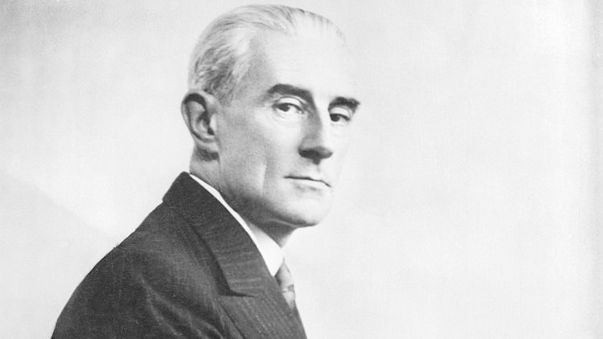Maurice Ravel Deluarte is perhaps one of the best known composers in the world. His most famous work is Boléro, a piece he composed while he was on vacation in Donibane Lohizune/San Juan de Luz/Saint Jean-de-Luz, in Iparralde. Before World War I, Ravel had been working on a piano concerto entitled Zazpiak Bat. “Zazpiak Bat” is, of course, a common motto in the Basque Country, signifying the unity of the seven Basque provinces. Zazpiak Bat is also the nickname of the coat of arms of the Basque Country, which was created in 1897, when Ravel was 22 years old. Thus, as argued in this article, he seemed to strongly identify with the growing Basque identity. Indeed, he spoke Basque fluently.

- When World War I broke out, Ravel tried to join the French Air Force, but was rejected because of his age and a slight heart issue. He eventually made it into the war effort as a truck driver for an artillery regiment. He delivered munitions in the middle of the night under German bombardment, suffered frost bite, and had to undergo a bowel operations to fix issues related to dysentery.
- Ravel was born in Iparralde, in Ziburu (Ciboune in French), in the province of Lapurdi. His father, Pierre-Joseph Ravel, was an engineer and inventor. He invented a steam-powered automobile in the 1860s and, with his other son Edouard, built a vehicle that could perform somersaults. Ravel’s mother, María Deluarte, was from the Basque town San Juan de Luz. She was “illegitimate and barely literate” but she was also a free thinking person who passed this trait onto her son.
- Ravel’s dad’s mechanical mind seemingly influenced his music. Ravel’s friend Igor Stravinsky once said that Ravel had “the somewhat mechanical thoroughness of the Swiss watchmaker.”
- Ravel’s strong connection to the Basque Country is summed up by words he wrote to Eugène Cools: “A compatriot of mine, because you have to know that we Basques have two homelands, l’abbé Donostia de San Sebastián [Aita Donostia], has visited me to make his works known and ask me advice.”
- The reason Ravel abandoned Zazpiak Bat seems to be World War I. After he enlisted, he was busy driving trucks and tending to the wounded. Indeed, he wrote his friend Alexis Roland-Manuel “Impossible to continue Zaspiak-Bat, the documents having remained in Paris.” While he never finished Zazpiak Bat, some Basque influences did make it into other works, such as his Piano Trio. In particular, the opening movement was what Ravel called “Basque in coloring.”
Primary sources: Wikipedia and Mazorra Incera, Luis. Ravel Deluarte, Maurice. Enciclopedia Auñamendi, 2019. Available at: http://aunamendi.eusko-ikaskuntza.eus/es/ravel-deluarte-maurice/ar-124708/
Discover more from Buber's Basque Page
Subscribe to get the latest posts sent to your email.

